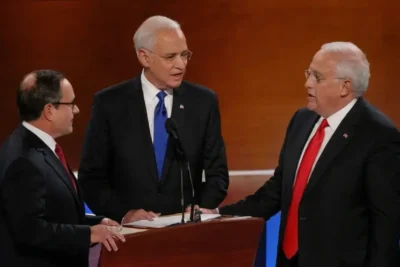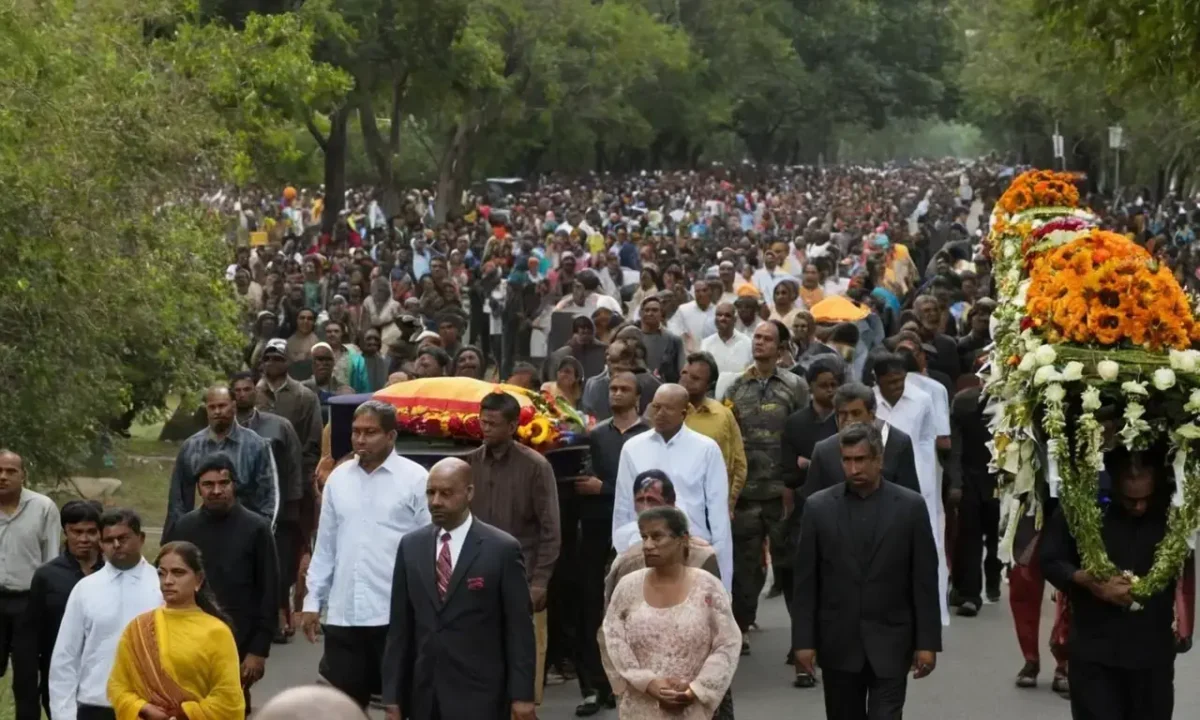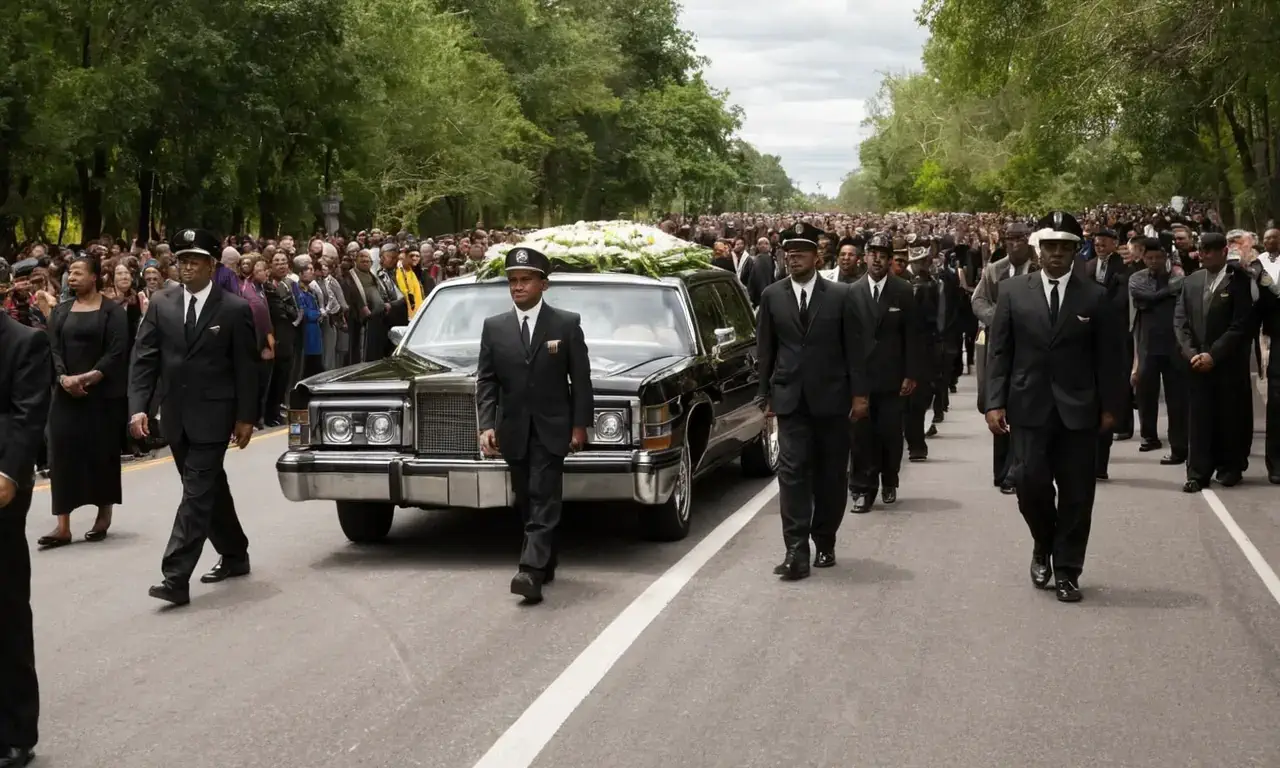
Funeral Procession: Right-of-Way & Safe Driving Practices

A funeral procession is a solemn event that marks the final journey of a deceased loved one. It involves a group of mourners traveling together, often in a designated order, to their final resting place. This tradition holds deep cultural and emotional significance for families and communities as they bid farewell to someone who has passed away. While the act of mourning is deeply personal, it also necessitates careful consideration of traffic laws and safety protocols to ensure everyone's well-being during this sensitive time.
This article aims to provide a comprehensive guide on funeral processions, covering topics such as right-of-way regulations, best practices for drivers encountering these events, and the cultural significance of this tradition. By understanding the legal framework surrounding funeral processions and learning how to navigate them safely, we can ensure that this solemn journey is conducted with respect and care for all involved.
- What is a Funeral Procession?
- Right-of-Way Laws and Their Variations
- Importance of Respecting the Right-of-Way
- Guidelines for Drivers Encountering Procession
- Responsibilities of Participants in Procession
- Safety Measures During Funeral Procession
- Etiquette and Cultural Considerations
- Legal Implications and Enforcement
- Conclusion
What is a Funeral Procession?
A funeral procession is a symbolic representation of life's journey culminating in death. It involves a group of mourners traveling together from the place of death to the burial site or memorial service. This collective movement symbolizes the shared grief and support among those who have lost someone dear. The procession often includes family members, close friends, and sometimes even community members who wish to pay their respects.
The order of participants in a funeral procession can vary depending on cultural traditions and personal preferences. However, there are generally established protocols that ensure a smooth flow and respect for the deceased. For example, the casket may be carried by pallbearers, followed by family members or close friends, with mourners walking behind. This sequence not only reflects the solemnity of the occasion but also allows for individual expressions of grief during this emotional journey.
Right-of-Way Laws and Their Variations
One of the most crucial aspects of funeral processions is understanding the right-of-way laws that govern their movement. These laws vary significantly from state to state, with some jurisdictions explicitly granting funeral processions the right-of-way at intersections. In these states, drivers are legally obligated to yield to the procession and stop if necessary, even if they have a green light.
However, in other states, there may be no specific legislation regarding funeral processions. This ambiguity can lead to confusion among drivers, especially those unfamiliar with local customs or regulations. It's important for everyone involved to prioritize safety and act responsibly when encountering these events. While some states may not explicitly mention the right-of-way for funerals, it's generally understood that they should be treated similarly to emergency vehicles.
Importance of Respecting the Right-of-Way
Respecting the right-of-way during a funeral procession is not just about following traffic laws; it's about acknowledging the solemnity and emotional weight of this journey. It demonstrates respect for the deceased and their loved ones as they navigate through this difficult time. By yielding to the procession, drivers acknowledge that this event holds significant cultural and personal meaning for those involved.
This practice also helps to ensure a safe and orderly flow of traffic during the procession. When drivers understand that they must stop or yield to funeral processions, it minimizes potential conflicts and ensures everyone's safety. This shared responsibility not only contributes to a smooth journey but also fosters a sense of community and support among those involved.
Guidelines for Drivers Encountering Procession

When encountering a funeral procession, it's crucial to act with caution and respect. While the right-of-way may be legally granted in some states, it's always best to err on the side of caution and proceed with care. Here are some guidelines for drivers encountering these events:
- Slow Down: As soon as you see a funeral procession approaching, slow down your vehicle and prepare to stop if necessary. This allows you to safely maneuver into the appropriate lane or yield to the procession.
- Signal Intention: If you need to change lanes, always signal your intention clearly before doing so. This helps other drivers understand your intentions and prevents potential collisions.
- Yield at Intersections: When a funeral procession approaches an intersection, stop completely if there is no designated right-of-way for the procession. This ensures that everyone involved can proceed safely without interruption.
- Be Patient: Funeral processions often take longer than usual due to the slow pace and respectful atmosphere. Be patient with other drivers and allow them ample time to navigate through the intersection.
By following these guidelines, you can ensure a safe and respectful experience for all those involved in the procession. Remember that this event is not just about traffic; it's about honoring the deceased and supporting their loved ones during a difficult time.
Responsibilities of Participants in Procession
Those participating in a funeral procession also have responsibilities to ensure the safety and smooth flow of the event. This includes being mindful of their surroundings, adhering to established protocols, and communicating effectively with others involved. Here are some key responsibilities:
- Orderly Movement: The order of participants in a funeral procession is crucial for maintaining a respectful and efficient journey. It's essential to follow the designated route and ensure that everyone moves smoothly without causing delays or disruptions.
- Respectful Conduct: Participants should maintain a respectful demeanor throughout the procession, avoiding loud noises or disruptive behavior that could detract from the solemnity of the occasion. This includes refraining from excessive talking or distractions that might hinder the flow of the event.
- Communication and Coordination: Clear communication between participants is essential for ensuring everyone's safety and smooth operation. If there are any changes in plans, it's crucial to communicate these updates promptly to avoid confusion or delays.
By fulfilling their responsibilities, participants can help ensure a safe and respectful journey for all involved. This collective effort not only honors the deceased but also demonstrates respect for those who are grieving during this challenging time.
Safety Measures During Funeral Procession
Safety is paramount during funeral processions, as it involves multiple individuals traveling together in close proximity. To minimize risks and ensure everyone's well-being, several safety measures should be implemented:
- Designated Driver: It's highly recommended to have a designated driver who will remain responsible for the vehicle throughout the procession. This ensures that no one is under the influence of alcohol or drugs while navigating through traffic.
- Emergency Kit: A basic emergency kit should be kept readily accessible in the car, including items like a first-aid kit, flashlight, and water bottles. This allows participants to address minor issues or emergencies that may arise during the journey.
- Weather Awareness: Weather conditions can significantly impact funeral processions, especially if it involves long distances or inclement weather. It's crucial to check the forecast beforehand and adjust travel plans accordingly. If necessary, consider postponing the procession until favorable conditions prevail.
By implementing these safety measures, participants can minimize risks and ensure a smooth journey for everyone involved. This proactive approach not only prioritizes the well-being of those attending the funeral but also demonstrates respect for the deceased and their loved ones during this emotional time.
Etiquette and Cultural Considerations
Funeral processions often carry cultural significance that varies across different communities and regions. Understanding these traditions can enhance the experience for all participants involved. For example, some cultures may have specific customs regarding attire or mourning practices during the procession.
It's also important to be mindful of local sensitivities when participating in a funeral procession. If you are unsure about any cultural protocols or etiquette, it's always best to ask those who know more about the tradition. This respectful approach ensures that everyone feels included and honored during this solemn journey.
Legal Implications and Enforcement
While right-of-way laws vary from state to state, there is a general understanding that funeral processions should be given priority when navigating traffic. However, it's essential to remain aware of local regulations and ensure compliance with all applicable laws.
If you encounter any issues regarding the procession or its adherence to traffic rules, it's best to contact local authorities for guidance. They can provide clarification on legal requirements and help resolve any potential conflicts that may arise during the event.
Conclusion
Funeral processions are a beautiful and meaningful way to honor those who have passed away. By following these guidelines, participants can ensure a safe and respectful journey for all involved while demonstrating their respect for the deceased and their loved ones. Remember that this event is not just about traffic; it's about honoring the deceased and supporting their families during a difficult time.
Leave a Reply

Related Links